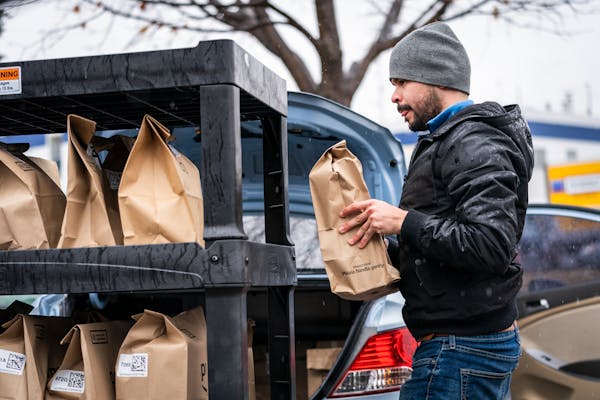The federal government on Tuesday committed nearly half the $505 million needed to build the Gold Line bus-rapid transit project, planned to provide service between downtown St. Paul and Woodbury beginning in 2025.
"There's nothing better than showing up here with a check," said Nuria Fernandez, administrator of the Federal Transit Administration (FTA), at a ceremony in Union Depot, the Gold Line's western endpoint.
The FTA will contribute $239 million to the east metro line from the federal bipartisan Infrastructure Investment and Jobs Act, with Ramsey and Washington counties each chipping in $120 million.
The result will be the first bus-rapid transit project in Minnesota that will largely operate on a dedicated lane — along the north side of Interstate 94 — meaning service won't be snarled by traffic congestion.
Tuesday's ebullient gathering was a rare bit of good news involving public transportation for the Metropolitan Council, the regional planning body that is building and will operate the Gold Line.
The Met Council has been more frequently in the news lately because of the woes of the $2.7 billion Southwest light-rail line, also under construction and beset with delays and cost overruns. The project is under review by the state Legislative Auditor. Meanwhile, crime and widespread drug and alcohol use aboard some Metro Transit trains and buses have stymied efforts to rebuilt public transit ridership decimated by the pandemic.
"Transit is basically about connecting people to their lives," including work, school, health care appointments and social engagements, said U.S. Sen. Tina Smith, D-Minn. "As we emerge from this pandemic, we need more connections, not less, and the Gold Line is a part of that."
Ridership on Metro Transit's buses and trains increased by 17% in 2022, but it's still just over half what it was before the pandemic, which gave rise to remote work.
Fernandez said in an interview after the ceremony that bus ridership has rebounded nicely nationwide, while commuter rail service — which traditionally brought office workers to their downtown jobs — has been slow to recover. That has proven true in Minnesota, as the Northstar Commuter Rail between Minneapolis and Big Lake continues to struggle.
"We now know that people are using [transit] systems at different times," Fernandez said, and not just during traditional rush hours. "We are now rethinking public transit of the future. We still have to move people, and we can't do it all in single-occupant vehicles."
The Gold Line will serve riders on St. Paul's East Side and in Maplewood, Landfall, Oakdale and Woodbury. The Met Council predicts the all-day service will provide more than 2 million rides annually by 2040 and access to nearly 90,000 jobs along the route, including at Maplewood-based 3M Co.
The Gold Line "is a key element of our transportation vision for the entire region," said Met Council Chair Charlie Zelle.
Bus rapid transit service will play a big part in that build-out.
Beyond the Red and Orange bus rapid transit lines now operating, planning continues on the Purple Line in the northeastern metro suburbs. The Met Council is developing a network of popular arterial bus rapid transit lines that can operate in traffic across the metro area, beyond the current A, C and D lines.
"This is just excellent, first-class bus service," said U.S. Sen. Amy Klobuchar, D-Minn. "This is more than just another rush-hour bus service."
Klobuchar noted that the women in Minnesota's congressional delegation played key roles in supporting public transportation funding, including the Gold Line. She serves as the second-highest ranking Democrat on the Senate Commerce, Science and Transportation Committee, while Smith chairs the Subcommittee on Housing, Transportation, and Community Development. U.S. Rep. Betty McCollum, D-Minn., who represents St. Paul, serves on the powerful Appropriations Committee in the House.
"These are people that understand that Congress is there to improve peoples' lives," said Gov. Tim Walz, a Democrat who served six terms in the U.S. House. "They're not there to get Twitter followers, they're there to get bus rapid transit projects done."
Victim in north Minneapolis shooting identified as man from Chicago

This St. Paul native now goes by Kandi Krush, and she body-slams her opponents in the ring

Baseball Metro Player of the Year packs up his five tools and leaves

